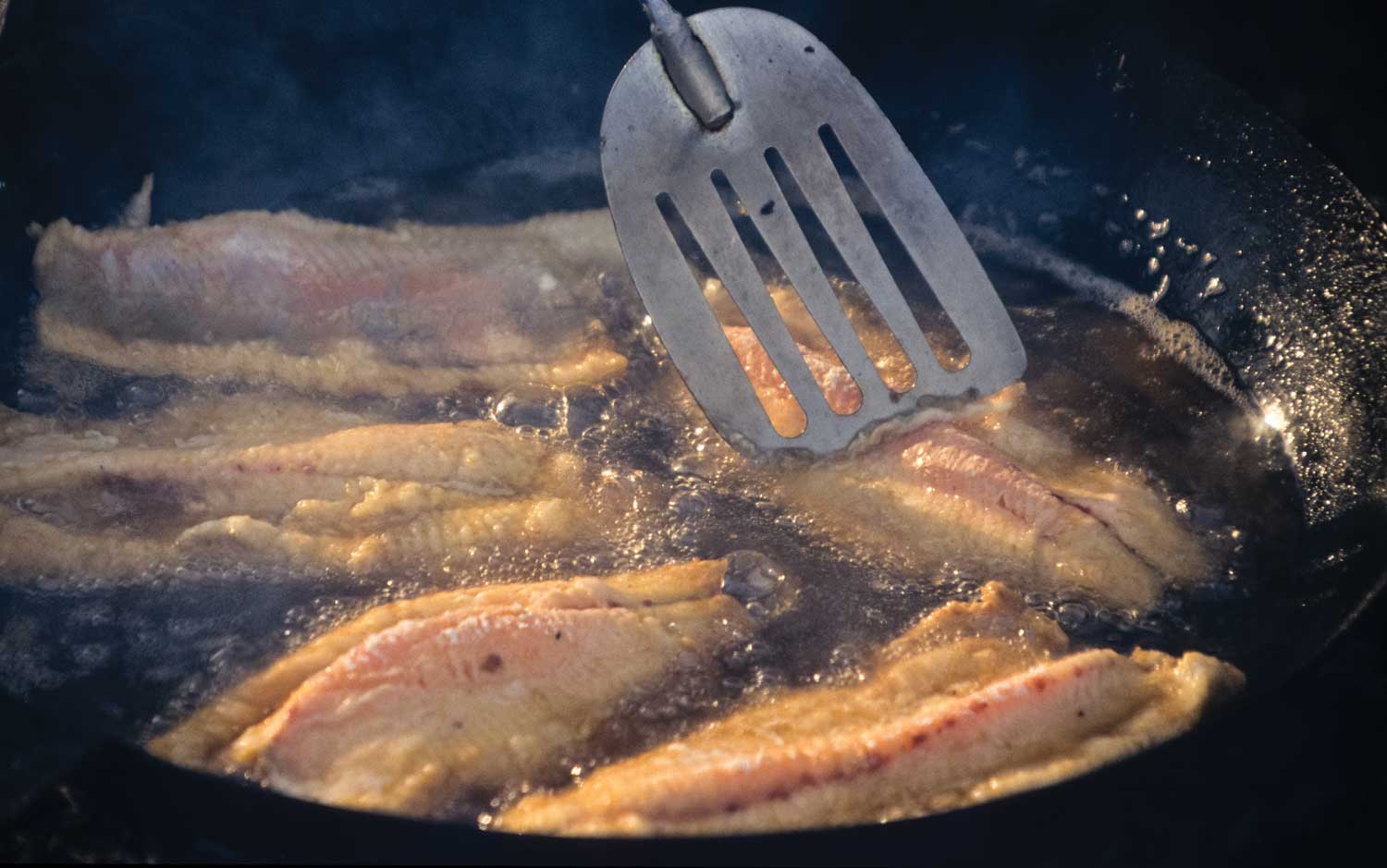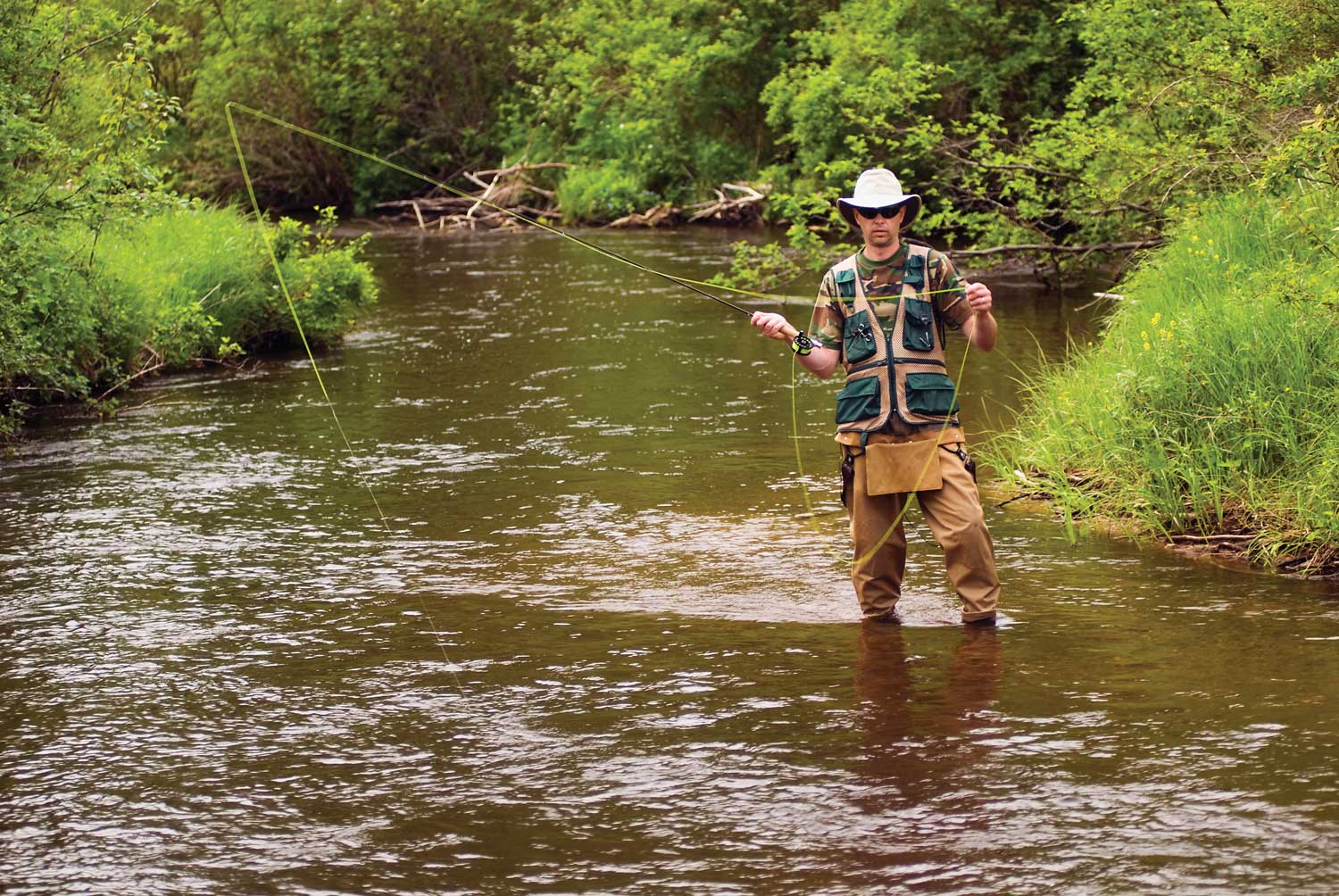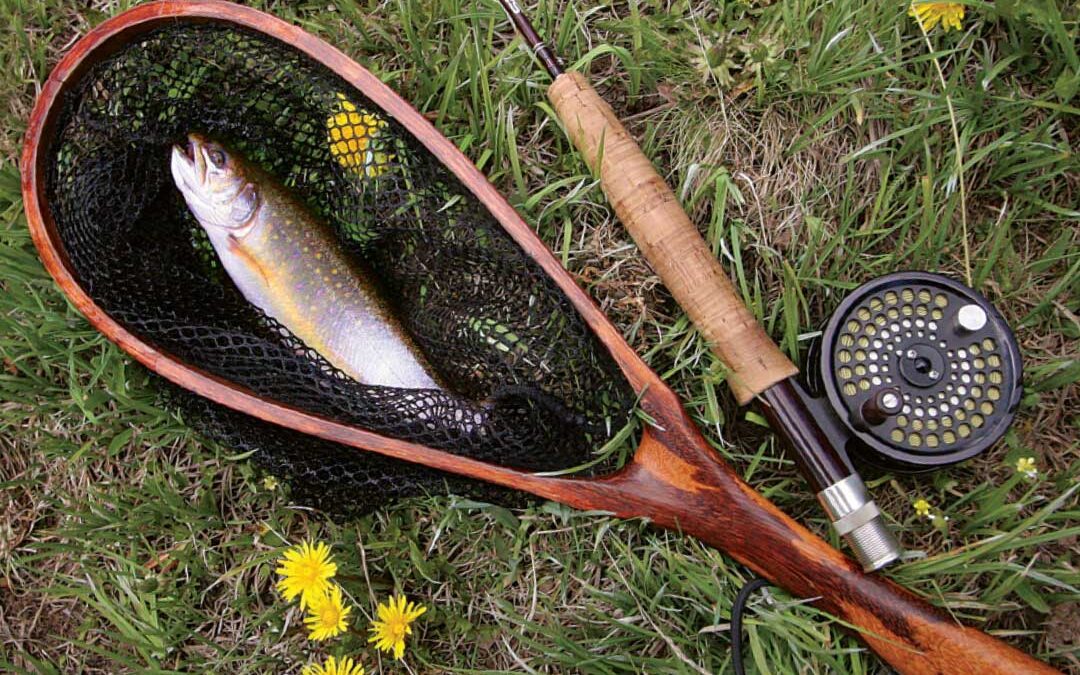There are things in this world—rare, fine things—that no amount of money can buy. I’m not talking about intangibles: love, happiness, a satisfied mind. I’m talking about palpable objects of desire, things that exist in the realm of the senses but are simply unobtainable via normal channels.
How does one come to possess them? There is only one way. You have to have a connection.
It was noonish, a sun-splashed, high-summer day when the phone rang. At my “Hello” the cultured voice of my friend Mary, who has toured the world as a concert pianist, said “Marvin was here.”
The breath caught in my throat. A man of recondite knowledge and almost supernatural outdoor skills, Marvin appears at Mary’s door a couple times a year bearing the kind of wild harvests Manhattan chefs would sell a kidney for.
“What time?” I asked. My tone was hushed.
“Let’s say 6:30.”
“Wine?”
“It’s taken care of.”
Upon my arrival Mary whisked me into the kitchen where, before I knew what was happening, she’d slipped an apron over my head. She tied the strings at my back before gliding to the refrigerator, pulling out a large rimmed baking sheet draped with a white cotton dishtowel, and setting it on the counter. Our eyes met for a pregnant moment; then she peeled back the towel to reveal the treasure hidden beneath: a baker’s dozen brook trout, most of them in the eight-to-twelve-inch range, though a couple looked to nudge into the teens.
Their freshness was indisputable. They had almost no odor, their flesh was firm and pink, and if their colors had faded a bit they still had the power to amaze. The trout had been gutted but left whole—the way they should be.
I shook my head in wonderment. “Where does he get these?”
“All I know is that it’s somewhere in the Upper Peninsula,” Mary said, pouring Pouilly-Fuissé for both of us. “He told me once that it’s not far from the road but that he’s never seen anyone else fishing there.”
“The Holy Grail of every brook trout fisherman,” I mused.
Now, with an island of butter reposing in a pool of canola oil in the pair of big cast-iron skillets, I cranked the flame to medium-high. While they were heating up I dipped the trout in beaten egg thinned with a little milk and dredged them in seasoned flour, working the mixture into every crevice. The butter-oil blend up to temperature, I laid in as many trout as fit comfortably in the pan, pleased at the emphatic sizzle they threw back. Then, patience being as much a virtue in the kitchen as on the water, I stood in my apron and waited, sipping my wine and enjoying the festive, anticipatory symphony that is trout frying.
After a while Mary, who is a superb cook and notorious perfectionist, began biting her lip. “Don’t you think you should turn them?” she asked, edgily.
“One more minute,” I said. “Tender at the bone, and all that.”
I turned the trout at the appropriate interval, and to her relief they were just right, a crusty golden-brown. I gave them a sprinkle of salt and a grind of black pepper, and when the other side was done I repeated the seasoning before removing them to a plate in a low oven. Then I added another cube of butter to the skillets along with another glug of oil, and fried up the rest of the trout.
They were tempura-crisp on the outside, moistly sweet within, and the four of us at the table fell to them like ravening beasts. There were tiny boiled potatoes, too, slender haricots verts, a salad of bitter greens dressed with vinaigrette. And, of course, plenty of Pouilly-Fuissé. It was a meal perfect in its simplicity. We raised our glasses to Marvin.
Later, I thanked Mary with a copy of James and Kay Salter’s Life is Meals: A Food Lover’s Book of Days. I inscribed a note in the front, ending it with a quote that is quintessential James Salter: “There are nights one remembers.”
In his piquant essay collection The Incompleat Angler, Jim Enger writes that one of fly fishing’s biggest myths is that trout “taste worse than fruitcake.” He cites a “university study” in which three groups of fly fishermen—grizzled veterans, intermediates, and relative newcomers—were assembled in a classroom and asked the question “Have you ever eaten a trout?”
The first group, according to Enger, responded overwhelmingly in the affirmative and immediately plunged into a learned discussion of wines and recipes. The second group responded by fidgeting uncomfortably in their seats, and when one guy finally admitted to having eaten a trout, the others were seen to edge away from him.
When the third group was asked “Have you ever eaten a trout?” Enger reports that three of the subjects fainted and four began to hyperventilate, at which point someone called 911.
If a smile of recognition is crossing your face, well, that’s precisely Enger’s point. But here’s the thing: The Incompleat Angler came out in 1996. Since then, the gospel of catch-and-release has not only become more deeply and firmly entrenched but more widely and universally embraced. The movement may have begun among fly fishermen, who rallied behind Lee Wulff’s famous pronouncement: “A trout is too valuable to catch only once,” but these days it’s spread to every corner of the sportfishing community.
With a vengeance.
This marks a sea change, even a cultural revolution. The fish porn that those of us of a certain age grew up with—stringers of walleyes too heavy to hold; pike piled like cordwood in wheelbarrows; bass laid out by the dozens on the hulls of overturned canoes—seems as quaintly relic as the grainy contents of old girlie magazines. It’s a little embarrassing to think back and remember how titillated we were by both.
Indeed, it’s almost impossible to overestimate the role catch-and-release has played in restoring, improving, and preserving fisheries in both fresh and saltwater. Redfish, stripers, Atlantic salmon, muskies, lake trout (which grow and reproduce so slowly in the far North that removing a large one is less an act of harvest than a form of mineral extraction) . . . It’s hard to think of a gamefish population that hasn’t benefited from it, whether practiced voluntarily or mandated by regulation—regulation made possible, politically, by its acceptance among the angling public.
It may well be the greatest conservation success story of the last 30 to 40 years. Far less fish is desiccating into inedible planks in the bottoms of home freezers, too, which has to be viewed as a positive development.
The last time I was a guest at a “traditional” Ontario fishing lodge—the kind of place where for decades it was assumed that your ice chest would be packed to the gills when you left—the possibility of keeping a few fish to take home wasn’t even on the table. You could still enjoy the artery-occluding pleasure of an old-fashioned shore lunch, but only by special request—and only with commercially caught walleye fillets provided by the lodge. We were told they came from Manitoba.
Who dreamed they’d see the day when, in the walleye-smallmouth-pike belt of northern Ontario, it’d be camp policy to release no fish to the grease?

Still, on the spectrum of catch-and-release zealotry trout fishermen remain the most oppressively dogmatic, the most tediously self-righteous (see Enger). As the imagined occupants of the moral high ground, they view the keeping of any trout as unpardonably heinous, an act that leaves blood on the hands in more ways than one.
The pendulum always lingers at the extremes before settling somewhere in the middle, of course. It’s simply the natural order of things. And around the edges, at least, there are signs that attitudes about catch-and-release are softening, that maybe it’s okay to keep an occasional fish for the table, even “high value” species like trout.
The rise of the Slow Food movement; books like Steven Rinella’s The Scavenger’s Guide to Haute Cuisine and blogs like Hank Shaw’s Hunter Angler Gardener Cook; the increasing interest in food and cooking in general, and more specifically, in using ingredients that are seasonal, natural, and locally produced—all have contributed to making catch-and-keep a little more acceptable, a little less “incorrect.”
Not long ago I read a magazine article on making steelhead sashimi—an article no one would have dared publish just a couple years ago. The procedure was surprisingly labor-intensive, though the really hard part, based on my experience, would be the first step, i.e., catching a steelhead. It’s like the old joke about how to become a millionaire: First, get a million dollars.
I did, however, make some Swedish sashimi not long ago. Gravlax, I mean. I caught a porked-up rainbow in a friend’s pond, and when it expired within seconds of being landed, its grilse-like size inspired me to give it the cure.
I rubbed Kosher salt, sugar, and cracked black pepper into the fillets, sprinkled them with Aquavit, sandwiched them around a layer of fragrant fresh dill, wrapped them tightly in plastic, put them in the bottom drawer of the refrigerator, and weighted them down with a piece of concrete patio block. I flipped them bottom-to-top a couple times a day, and after the third night I drained them, patted them dry, and shaved off a slice.
It was like swallowing a miracle. Silky, buttery, with a flavor that was delicate yet assertive at the same time. The moment cried out for celebration, so I pulled the Aquavit out of the freezer and knocked back a shot, gasping at the icy burn.
Rare, fine things.
Last September, having concluded that hunting grouse in the jungles typical of opening weekend isn’t sport so much as self-abuse, I decided to open the Wisconsin grouse season by going trout fishing.
There’s a beguiling little brook trout stream I’d always wanted to try at that time of year, and with my friends Donny and Erik, who are made of stouter grouse-hunting stuff than I, planning to be at the cabin for the bird opener, it seemed like a natural. I told them that if I got lucky there’d be brookies for breakfast on Sunday morning, and with this in mind I brought a pound of bacon along. For the grease.
If I’m cooking brook trout, I’m going whole hog.
It takes a bit of doing to get to this stream, starting with a hilly cross-country trek—a trek that, ironically, winds through a big piece of gorgeously brambly grouse cover. It was a crisp, cool day, too, the kind that almost made me regret leaving my hunting kit at home.

The stream is a feeder to a small river (a fetching piece of water in its own right), and when I reached the rocky cliffs above the latter I heard, floating up from the canopy on the other side, the throaty clangor of hounds. Bear season was in full swing, and as I switchbacked down the slope the tromboning swelled, receded, then swelled again. Soon it was clear that the pack was heading my way, and within seconds a half-dozen tawny brindled Plotts came pouring out of the understory in raucous full cry. While I watched from the opposite bank they turned abruptly at the river’s edge, galloped upstream for some distance, then angled back into the woods, the entire encounter passing in a breathless Doppler rush.
I was heading upstream as well, and at some point a new note of urgency in the hounds’ tone told me they were barking treed. Just as the mouth of the feeder came into sight I scanned the treetops off to the left of the river and spied the bruin. A medium-sized adult, he was sprawled more-or-less horizontally in the fork of a maple, and at the risk of egregious anthropomorphizing he was wearing an expression of stoic resignation—as if he knew this could not end well for him.
With the hounds’ cacophony as my background score I worked up the stream and started fishing. The water was lower than I expected, and while I dropped my fly—I was using a size 16 Hare’s Ear beadhead—into every likely looking pool, pocket, and riffle I couldn’t turn a trout. This fruitless prospecting went on for an hour or more, and through it all the Plotts continued to bark treed. It’s wild country in there, roadless except for the two-tracks left by loggers, but I couldn’t fathom why the houndsmen were so tardy getting to their dogs. It was starting to grind on me.
At last I came to a place where the stream emerges from the woods and coils lazily through a broad, marshy flat. I’d always given this stretch short shrift—from what I’d seen it looked silty-slow and largely featureless—but with nothing to lose I decided to inspect it more carefully. A tongue of deeper, faster water book-ended by pine snags looked promising, and after easing through the tall grass to the top of the run I crouched low, stripped a few feet of line off the reel—zizz, zizz, zizz—and flipped the beadhead across the current. The fly swung briefly, the line came electrically tight, and upon feeling that living presence on the other end, I uttered a shamelessly girly cry of pleasure, something like “Hee-hee!”
The trout tore this way and that, the willowy bamboo rod magnifying every throb. It was about a nine-incher, perfect for the pan, but as I cradled it in my hand, astonished as always by the startling purity of the colors and the almost holographic effect of the markings—like a galaxy of haloed stars—I couldn’t bring myself to keep it. Or to keep any of the others, all eating-size, I took from that spot. So much for my skillet-thumping Iron Chef talk. Maybe if I hadn’t seen the bear I’d have been less…I don’t know. Merciful? Ambivalent?
Maybe.
When I stood up to leave I realized that the hounds’ baying had stopped. Now there was only the gurgle of the stream, straining through the pine snags.
And, back at the cabin, there was bacon.

